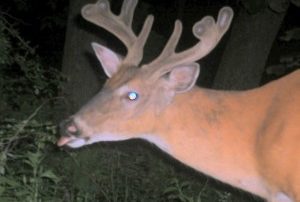Summer Deer Scouting: Mock Scrapes And Trail Cameras
A new regulation this year in Virginia prohibits the use of minerals to attract deer in one of the counties I hunt. Since I’m now forced to give up monitoring mineral licks, I’m making mock scrapes and setting trail cameras beside them. Several studies have shown that whitetail bucks will visit scrapes with fresh scent year-round, and especially in the summer months. The fake scrapes are good places (not as good as mineral licks, but the next best thing) to get images of bucks that will roam your area this fall. A mock scrape is not only scent-based, but also a visual sign. Rake out at least a 2 foot by 3 foot area below an overhanging branch. As you [...]





